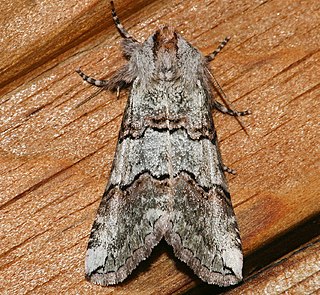
Edward Augustus "Ansell" Clarke was an Australian rules footballer in the Victorian Football League.

100 Greatest African Americans is a biographical dictionary of one hundred historically great Black Americans, as assessed by Temple University professor Molefi Kete Asante in 2002. A similar book was written by Columbus Salley. First published in 1992, Salley's book is titled The Black 100: A Ranking of the Most Influential African-Americans, Past and Present.
Ceranemota albertae, the Alberta lutestring, is a species of moth of the family Drepanidae first described by John Frederick Gates Clarke in 1938. It is found in western Canada, from south-central British Columbia east to south-eastern Saskatchewan. The habitat consists of dry open woodlands and shrub areas with wild cherry.

Ceranemota improvisa is a moth in the family Drepanidae. It was described by Henry Edwards in 1873. It is found in North America, where it has been recorded from northern California, western Oregon, western Washington and south-western British Columbia. Adults are on wing from late September to November in one generation per year.

Ceranemota fasciata is a moth in the family Drepanidae. It was described by William Barnes and James Halliday McDunnough in 1910. It is found in North America, where it has been recorded from British Columbia to northern California. It is also present in coastal southern Alaska. The habitat consists of coastal rainforests, mixed hardwood forests and montane riparian areas.

Ceranemota crumbi is a moth in the family Drepanidae. It was described by Foster Hendrickson Benjamin in 1938. It is found in North America, where it has been recorded from western Oregon and the Washington Cascade Range. Its habitat consists of coastal rainforests and mixed hardwood forests.

Ceranemota tearlei is a moth in the family Drepanidae. It was described by Henry Edwards in 1888. It is found in North America, where it has been recorded from British Columbia and central Alberta south to central California in the west and to Utah and Colorado in the Rocky Mountains. The hindwings are lighter grey with somewhat darker markings. Adults are on wing from late August to October in one generation per year.
Ceranemota partida is a moth in the family Drepanidae. It was described by John Frederick Gates Clarke in 1938. It is found in North America, where it has been recorded from northern Colorado.
Ceranemota amplifascia is a moth in the family Drepanidae. It was described by John Frederick Gates Clarke in 1938. It is found in North America, where it has been recorded from California.





